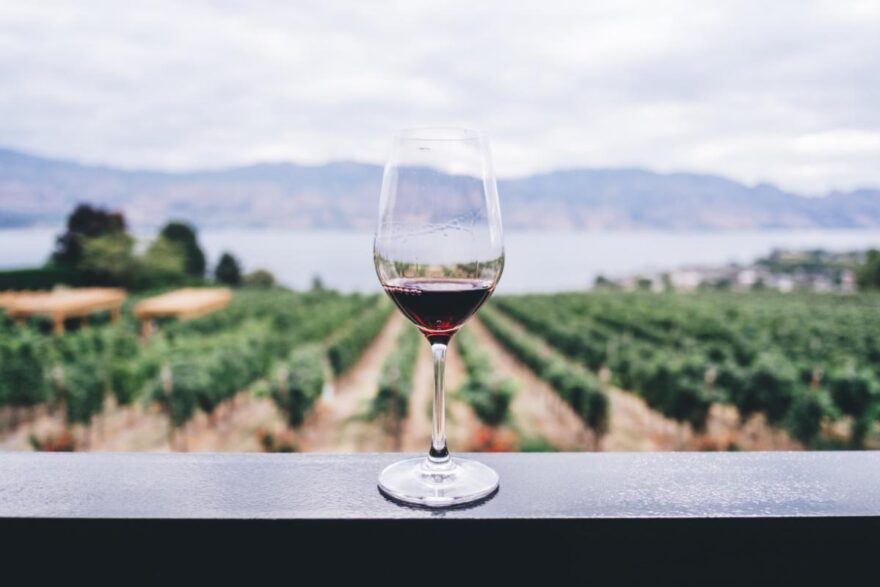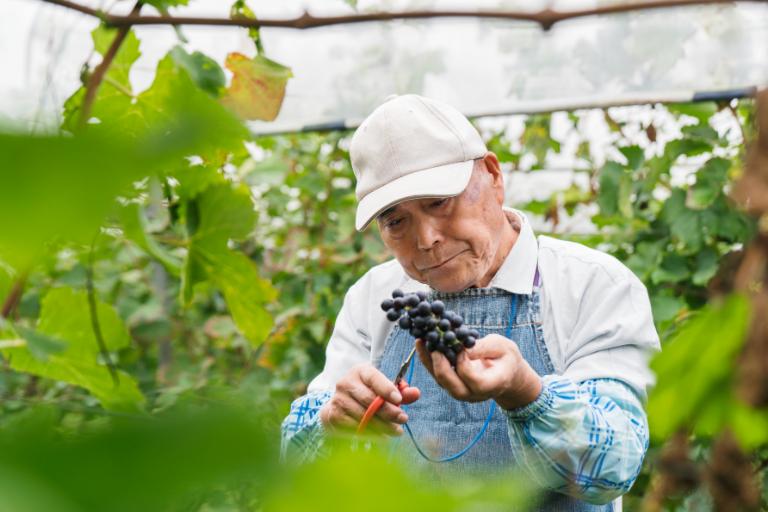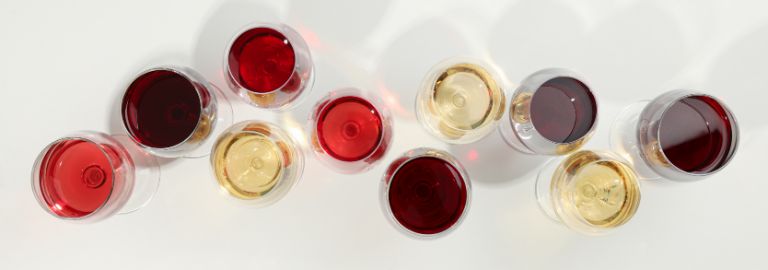What is Wine?


What is wine made from?
Wine is an alcoholic drink made from fermented grapes. There are also fruit wines, or country wines, that is made from fermented fruits. However, wine in the traditional sense is made from wine grapes.
What are the differences in the grapes we eat and wine grapes?

The grapes that you eat are different breeds than wine grapes. Most wine grapes are Vitis Vinifera species while table grapes are made from Vitis Lambrusca or other species.
There are many differences between the two. Table grapes have high production, are large in size, have thin skins, have less sugar and acidity, and overall less flavor. Wine grapes yield less per vine, are smaller than table grapes, have thicker skins, more sugar and acidity, and overall more flavor. This is what gives wine structure and flavor.
Elements that compose the wine

Modern-day winemaking consists of many elements that create the final product.
Grapes
You must have good grapes to make good wine! While indigenous species are still used today, vines have since been transported all over the world and new grapes are being cultivated daily in order to grow in the desired climate and region.
Yeast
Grapes and all fruits naturally contain yeast that begins to ferment the juice when it is exposed. While some winemakers still choose to utilize indigenous yeasts, the production of commercial selected yeast is what the majority of winemakers choose to use.
Yeasts produce byproducts that produce certain flavors and accentuate different aspects of the wine. Winemakers are able to choose specific commercial yeasts based on their desired outcome for that varietal.
Acid
The acidity of the grape during harvest is extremely important. It is one of the most important aspects of a balanced wine and helps with the aging. Some New World wineries will add acid during the winemaking process in order to create their desired wines.
It is unlawful in most Old World wine regions to use acid additives, so the grape growers have to be especially mindful of what is happening in the vineyard and harvest when the acid is highest in the grapes.
Tannins
Tannins are naturally occurring in the skins and seeds of plants. They are also found in the oak barrels and chips used to age wine. They taste bitter and contain the color that you see in the wines. Tannins add character and body to wine and allow them to age well.
High tannins wines will make your mouth feel dry and sticky. Red wines have much higher amounts of tannins than white wines because they are fermented with the skins on.
Additives
Modern winemakers routinely use additives during the winemaking process. While some of these additives are illegal in some regions, they are standard practice in most New World countries.
Enzymes are added to wines during fermentation in order to prevent bad indigenous yeast from growing and overtaking the beneficial yeast. Just like with commercial yeasts, enzymes have become cultivated to have different benefits for winemakers.
Sulfur is added to wine as an anti-oxidative preserver. Organic wines or wines that are free of sulfur will age too quickly, have a shorter lifespan, and oxidate much faster than wines with sulfur added.
Gum arabic has been a common ingredient in the making of wine in order to preserve aromas and make them smell richer.
Polysaccharides are added in order to preserve the wines tannins, color, and flavor; allowing it to age longer.
Fining Agents
Unfortunately, many wines are not vegan. The use of animal parts as ingredients for fining and filtering wine has been a common practice for centuries. Egg whites, gelatin, and bentonite clay are still modern day fining agents that help to filter your wine.
After fining agents are used, wines are forced through large machine filters that take out these fining agents and any other particles.
Single Varietal vs. Blended Wines
Contrary to popular belief, almost all wines are blends to some extent. In most wine regions, you can legally have up to 15% of another varietal in wine and still call it a single varietal of the dominant grape.
These single varietal wines have a bit of other wine blended into it to create a character and fix small flaws, like adding a highly acidic wine to one that lacks acidity.
Popular blends like Rhone or Bordeaux blends have multiple different grape varieties in them. This allows winemakers to create unique wines that accentuate flavors and characteristics that they desire their wine to have.
Different tastes of wines

Wine has a variety of characteristics that are all very important to the overall quality of the wine. A wine that is well-made will have balanced characteristics.
Acidity
The acidity in a wine plays a very important role. Most wines are fairly acidic. You can tell how much acidity is in wine by how much you salivate after you drink it. The acidity will take crisp, zesty, and often create citrus or unripe fruit flavors.
Sweetness
Wines can range from bone dry to very sweet. Traditionally wines are made to be dry or off-dry with the exception of late-harvest and dessert wines. Sweetness can add body to a wine. A wine that is fruit forward is often confused with a sweet wine.
Tannins
Tannins can often be confused with the dryness of the wine because they dry out your mouth. They can taste bitter and herbaceous. Wines that have a good balance of tannins and acidity can age well. While most white wines are very low in tannins, you can test the amount of tannins in red wine by how much they dry out your mouth and the feeling of roughness it leaves behind in your mouth.
Alcohol
Typically, white wines have a lower alcohol level than red wines and some dessert wines can have up to 40% alcohol. Most white wines are in the 8-11% alcohol range while most red wines are in the 11-13% range.
You can test the amount of alcohol by swallowing the wine and then breathing out. The level of burning sensation will help you to pinpoint the alcohol level.
Body
The level of body wine has is typically entirely dependent on the varietal of grape and the influence the winemaker’s practice has on the wine. The body of wine can typically be compared to the fat levels in milk. Light body wines will feel like you are drinking skim milk, while rich and full body wines will feel like you are drinking whole milk.
What does a winemaker do?
Making wine from table grapes would work, it would just be very diluted and bland. While grapes have everything they need to naturally make wine (yeast and sugar), most winemakers control these factors themselves.
They use special commercial yeasts that will help them steer the wine in the direction they want and in some countries and regions they can add sugar if they desire higher alcohol or sweeter wine. Winemakers control the growth of the grapes, harvest, what is added to the wine and why, blending of different wines, filtering, bottling, and much more.




